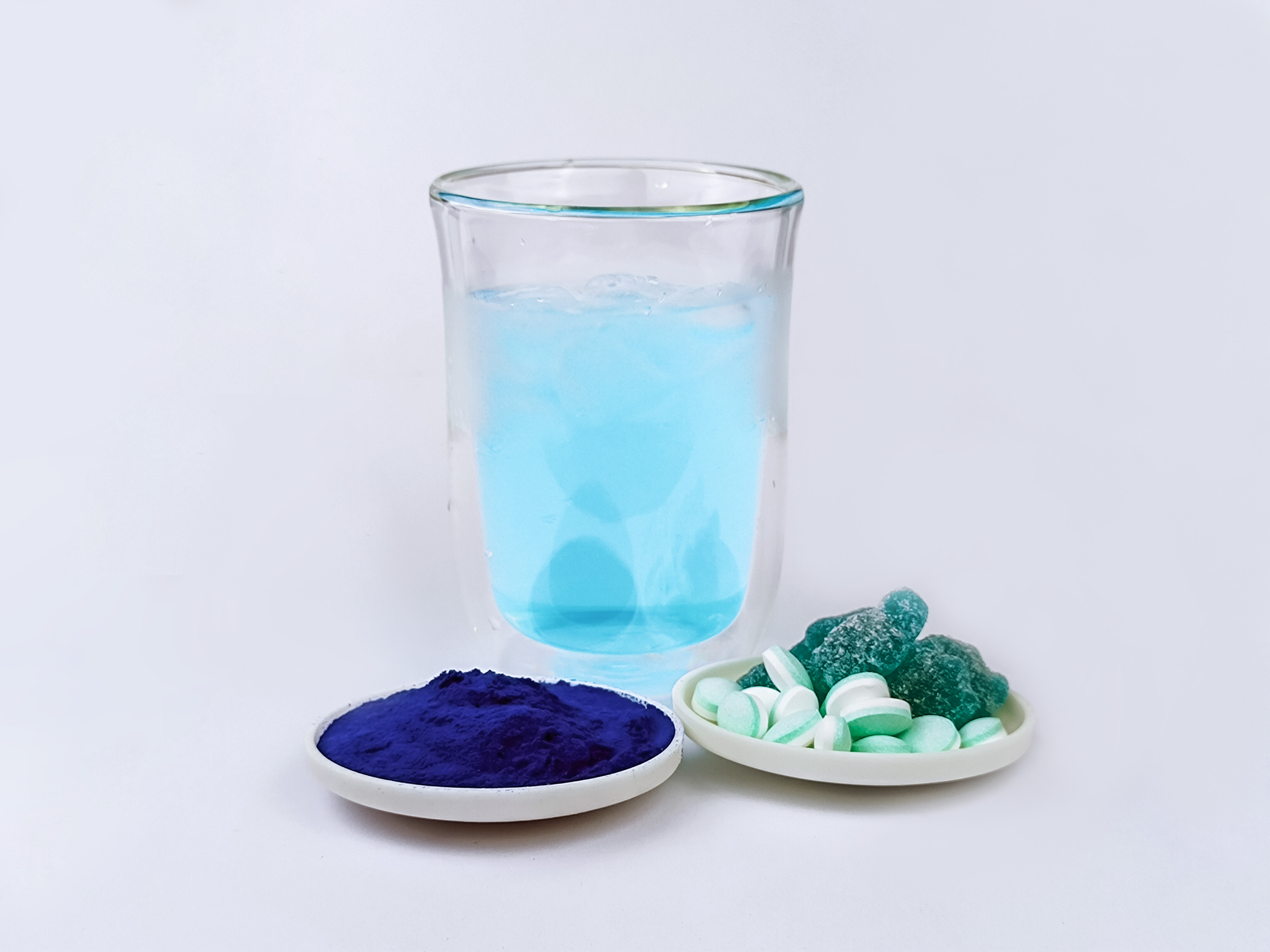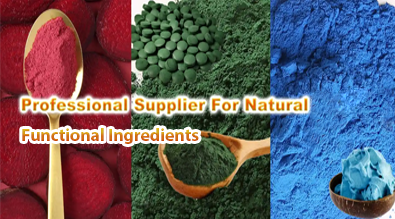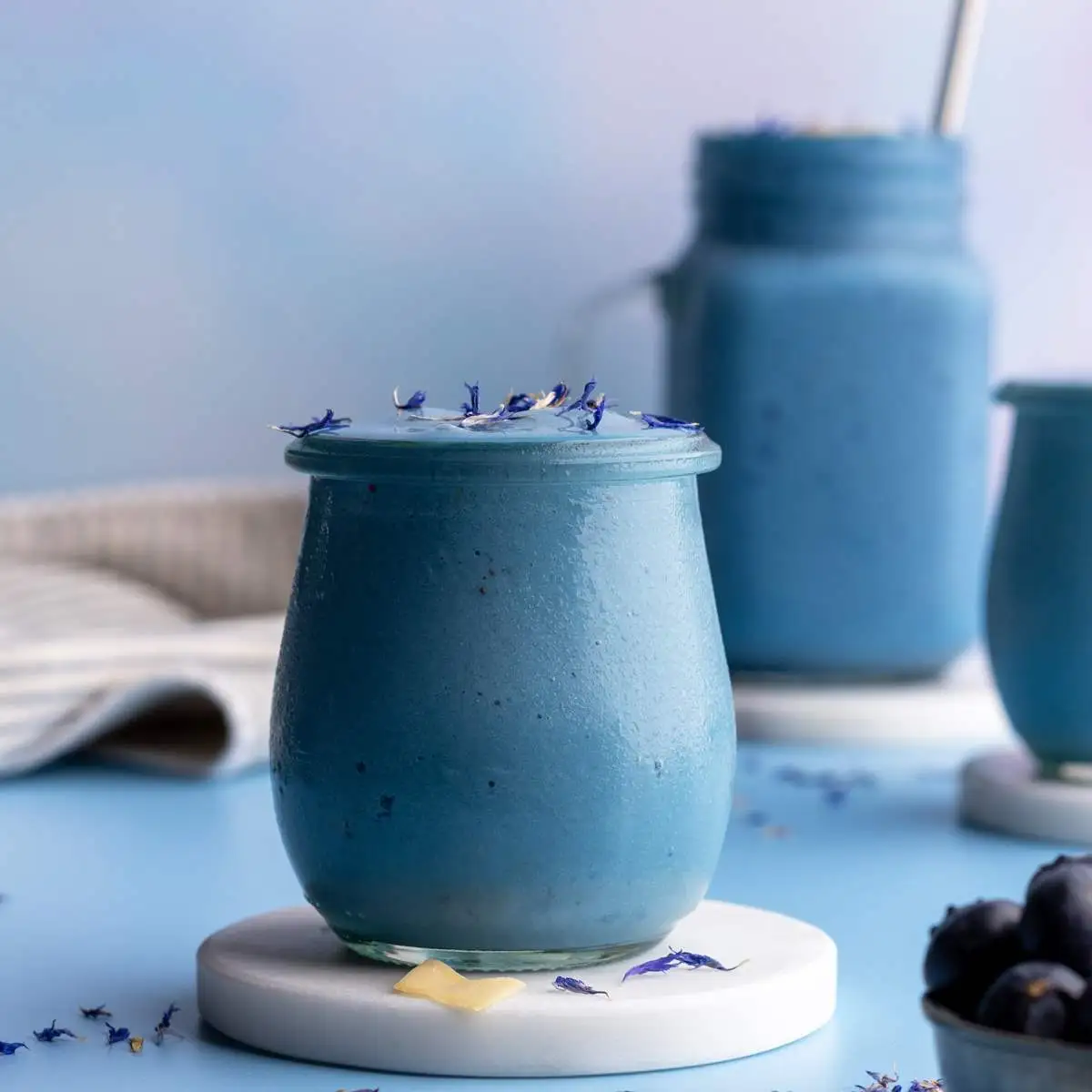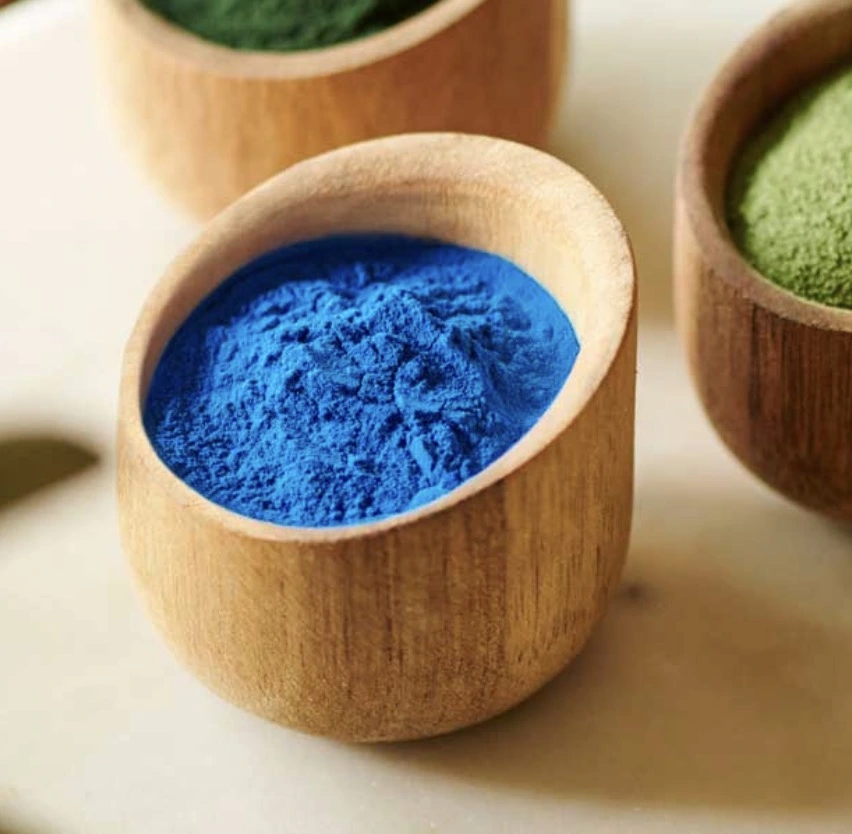The Science Behind Phycocyanin and Its Incredible Anti-Inflammatory Properties
The science behind phycocyanin and its incredible anti-inflammatory properties has captured the consideration of nourishment and well-being industry experts who are looking for nature’s inventive arrangements. Phycocyanin, a dynamic blue pigment-protein complex found in cyanobacteria such as Spirulina, offers exceptional antioxidant and anti-inflammatory capabilities that can help reshape the way fixings are utilized in advanced definitions. This normally inferred compound not only gives a striking color but also a host of useful benefits crucial for item designers and fixing dealers. With in-depth inquiry about and developing logical intrigue, phycocyanin has developed as a capable expansion to a run of health-enhancing items, counting useful refreshments, dietary supplements, and nutraceuticals.

What is Phycocyanin? Unveiling the Science of This Powerful Antioxidant
Understanding the Origin and Nature of Phycocyanin
Phycocyanin is a naturally occurring pigment-protein complex found basically in blue-green algae. It begins with pigment-rich life forms that possess freshwater situations. The substance is extracted mainly from Spirulina, a sort of cyanobacteria known for its noteworthy nourishment profile. At an atomic level, phycocyanin is classified as a biliprotein that binds to chromophores, conferring striking blue tints while also playing a basic part in light retention. Its common beginning and particular coloration have made it an important component in the domains of common nourishment coloring and useful wellbeing fixings.
The Biochemical Structure and Its Implications
Delving into the biochemical structure reveals a complex interplay between protein subunits and light-sensitive chromophores. This robust structure helps to stabilize the color and contributes to the compound’s ability to act as a formidable antioxidant. The molecular integrity of phycocyanin facilitates its preservation of functional activities even when subjected to processing conditions prevalent in food manufacturing. Food technologists and nutritional scientists appreciate that its structure not only boosts product aesthetics but also offers protective benefits against external oxidative agents. The structural resilience encourages the formulation of products that require stability throughout processing and storage, a critical factor in maintaining nutritional integrity.

The Evolution of Phycocyanin Usage in Food and Health Industries
The journey of phycocyanin from a natural pigment to a high-value ingredient has been driven by a surge in consumer demand for wholesome, naturally sourced additives. Historically, synthetic dyes and additives were prominent in industrial formulations. The uncertainty around long-term health effects has fostered a strong desire for ingredients that offer both safety and efficacy. Natural substances like phycocyanin are now preferred in regions with an emphasis on organic and clean-label products. As the ingredient ecosystem matures, manufacturers increasingly seek compounds that enhance not only the functional but also the sensory aspects of products.

How Phycocyanin Works: Mechanisms Behind Its Anti-Inflammatory Effects?
Molecular Interactions at the Cellular Level
At the heart of phycocyanin’s anti-inflammatory prowess lies a series of intricate molecular interactions that occur at the cellular level. It has been observed that the active components of phycocyanin interact directly with signaling pathways intimately related to the modulation of inflammatory responses. In essence, phycocyanin exhibits its effect by scavenging free radicals and by influencing a cascade of biochemical reactions that would otherwise escalate cellular stress and inflammation. The interaction with cellular membranes allows phycocyanin to insert itself into lipid bilayers, potentially neutralizing reactive species before they trigger excessive cellular reactions. This nuanced mechanism underpins the compound’s potential for inclusion in various formulations designed to address inflammation at its source.
Influence on Pro-Inflammatory Enzymes and Mediators
Phycocyanin influences the production of pro-inflammatory enzymes and mediators, fostering conditions under which inflammatory cascades are significantly dampened. The compound has demonstrated the ability to reduce the expression of molecules such as cyclooxygenase (COX) and lipoxygenase (LOX), which are common catalysts in inflammation. Altering enzyme activities in this manner results in a lower concentration of pro-inflammatory cytokines, hallmarks of a more balanced immune environment. Scientific literature indicates that this reduction in enzyme activity directly translates to an observable decrease in inflammation, whether in cell-based assays or in vivo examinations. This characteristic renders phycocyanin a promising adjunct in formulations aimed at soothing mild to moderate inflammatory conditions in food supplements or nutraceutical products.
Impact on Oxidative Stress and Systemic Inflammation
Phycocyanin's inherent antioxidant properties help to alleviate oxidative stress—a primary trigger for systemic inflammation. In cellular models, the introduction of phycocyanin has been linked to a marked decrease in oxidative markers, suggesting that its radical scavenging activity can interrupt cycles of inflammation and tissue damage. By neutralizing reactive oxygen species, phycocyanin preserves cellular integrity and function, which is particularly crucial in scenarios where oxidative mechanisms would otherwise exacerbate inflammatory damage. The interplay between oxidative stress and inflammation is complex, yet phycocyanin’s capability to modulate both processes simultaneously offers comprehensive benefits that resonate with health-conscious consumers.

Phycocyanin vs. Inflammation: A Natural Approach to Healing
Cellular Repair and Regeneration
Phycocyanin stimulates a remarkably effective natural process that aids in cellular repair and regeneration. By modulating intracellular signaling, this natural compound contributes to the repair of tissues that have been compromised by inflammation. Cellular membranes and internal organelles benefit from phycocyanin’s presence, as the compound not only neutralizes reactive species but also promotes the synthesis of endogenous molecules that support repair processes. Continuous exposure to inflammatory stimuli can cause cellular damage over time, but phycocyanin has been observed to accelerate the recovery process through intricate biochemical pathways that restore homeostatic balance.
Natural Synergies with Other Bioactive Compounds
In the vast ecosystem of natural ingredients, synergy is a key factor for success. Phycocyanin works harmoniously with various other bioactive compounds to form a robust defense against inflammation. When combined with other antioxidants, such as vitamins and polyphenols, phycocyanin’s efficacy is amplified. Its molecular structure facilitates interactions that intensify the collective antioxidant impact. Collaborative effects between phycocyanin and other natural extracts have been noted in numerous studies, where the inhibition of inflammation was more pronounced than when the compounds acted individually.
Long-Term Support for Inflammatory Conditions
The role of phycocyanin in managing chronic inflammatory conditions reflects its potential for providing sustained relief. Its regular incorporation into a dietary regimen may help stabilize inflammatory processes over extended periods, providing long-term support without reliance on synthetic remedies. Long-term exposure to moderate doses of phycocyanin has been observed to modulate key inflammatory markers within the body continuously, fostering an internal environment less prone to inflammatory-related damage. In food and beverage development, this aspect is highly attractive; manufacturers can leverage the compound's persistent action to formulate products that offer ongoing support for a healthier lifestyle.

The Role of Phycocyanin in Modulating the Immune System
Enhancement of Innate Immune Responses
Phycocyanin contributes significantly to the fortification of innate immune responses. Within the complex network of human physiology, the innate immune system serves as the first line of defense against external pathogens and internal imbalances. Phycocyanin facilitates the priming of innate immunity by modulating the activity of immune cells such as macrophages and natural killer cells. The compound’s incorporation appears to enhance the recognition and clearance of harmful agents from the system, leading to improved resilience against minor infections and inflammatory triggers. By acting in harmony with natural biological processes, phycocyanin nurtures the body’s intrinsic ability to fend off threats, thereby offering robust support for overall immune health.
Balancing Pro- and Anti-Inflammatory Cytokines
The immune response is orchestrated by a balance between pro-inflammatory and anti-inflammatory cytokines. Phycocyanin has emerged as a natural modulator of this balance, aiding in the reduction of cytokines that provoke excessive inflammation while stimulating those that foster healing. Such a dual function is highly valued in systems where inflammation can lead to chronic disease if left unchecked. By supporting the natural production of regulatory molecules, phycocyanin nurtures an internal equilibrium that is often sought after by industries aiming to restore and maintain health through food-based interventions.
Support for Adaptive Immunity and Overall Health
The benefits of phycocyanin extend into the realm of adaptive immunity, which provides tailored protection against specific pathogens. Emerging evidence indicates that phycocyanin influences adaptive immune responses by modulating antibody production and T-cell function. Such modulation supports a more robust immunological memory, an essential aspect for maintaining optimal health over the life course. As adaptive immunity becomes primed through natural compounds, the body increasingly benefits from enhanced vigilance against recurring threats. This advancement not only underlines the therapeutic potential of phycocyanin but also its applicability across a diverse range of product categories—from fortified beverages to nutritional supplements.

Scientific Studies Supporting Phycocyanin’s Anti-Inflammatory Benefits
In Vitro and In Vivo Experimental Evidences
A robust body of scientific work has been assembled to document the anti-inflammatory benefits provided by phycocyanin. In vitro studies have established that when cells are exposed to oxidative stress, phycocyanin significantly attenuates the production of inflammatory markers. Cell cultures have demonstrated a reduction in reactive oxygen species and a decrease in pro-inflammatory cytokine levels upon the introduction of phycocyanin. These experiments provide compelling evidence that phycocyanin can interrupt deleterious cellular processes, supporting its reputation as an efficient natural anti-inflammatory agent.
Clinical Investigations and Human Trials
Clinical investigations provide critical insights into how phycocyanin may perform in settings that mirror consumer use. Small-scale studies involving human participants have observed improvements in biomarkers associated with inflammation after diets enriched with phycocyanin-based formulations. Participants have shown reductions in C-reactive protein levels and other inflammatory mediators, pointing to the compound’s potential efficacy in real-world scenarios. Clinical trials such as these, though modest in scope, pave the way for larger studies that may further validate the long-term benefits of phycocyanin, both as a natural food additive and as a component of nutraceutical products.
Meta-Analyses and Reviews of Existing Research
A host of meta-analyses published in peer-reviewed journals have synthesized findings from numerous studies, creating a comprehensive picture of phycocyanin’s role in combating inflammation. Systematic reviews have underscored that the antioxidant and anti-inflammatory effects observed in separate studies are indeed interconnected, providing a broader understanding of the compound’s therapeutic potential. The compiled data consistently support the idea that phycocyanin offers valuable protection against oxidative stress, thereby indirectly mitigating inflammation. Researchers who have reviewed an array of studies agree that the cumulative evidence overwhelmingly endorses the use of phycocyanin as both a natural colorant and a health-enhancing ingredient.

Incorporating Phycocyanin Into Your Diet: Best Practices for Reducing Inflammation
Formulation Strategies for Enhanced Bioavailability
Manufacturers and formulators can employ a range of innovative techniques to ensure that phycocyanin is optimally delivered in consumer products. It is essential to maintain the delicate balance between preserving phycocyanin’s vibrant color and its bioactive properties. Advanced extraction and stabilization methods are used to enhance bioavailability, ensuring that the compound remains effective throughout processing and storage. Techniques such as microencapsulation or the formation of nanoemulsions have been explored to protect the integrity of phycocyanin. These formulation strategies help to safeguard its medicinal properties while permitting easy incorporation into beverage mixes, dietary supplements, and functional foods.
The integration of phycocyanin into complex matrices requires close attention to ingredient interactions. Strategies that combine phycocyanin with other natural antioxidants, such as vitamin C or polyphenols, can yield synergistic effects. Collaborative ingredient research has led to the development of formulations that not only accentuate the appealing color of phycocyanin but also maximize its anti-inflammatory benefits. In practical applications, companies have successfully introduced phycocyanin into products designed for daily consumption, ensuring that the natural compound is delivered in bioactive forms that maintain potency and support consumer health.
Dietary Applications and Consumer-Friendly Formats
Educating consumers about the various ways to include phycocyanin in a daily diet is as crucial as the technical formulation itself. Phycocyanin can be integrated into beverages, smoothies, and even baked goods without compromising taste or texture. An array of creative applications in functional snack items and fortified cereals has been developed based on rigorous trials and successful consumer feedback. The aim is to provide options that allow for easy incorporation of this natural anti-inflammatory agent into simple dietary routines, ensuring that individuals experience the compound’s benefits without having to alter established eating habits significantly.
The growing trend towards transparent labeling and clean ingredient lists has led manufacturers to highlight phycocyanin’s dual role as both a natural colorant and a health enhancer. Educational campaigns, recipe innovations, and collaborative workshops with nutritionists help build consumer trust. The emphasis lies on creating products that are not only visually appealing but also offer long-lasting health benefits, thereby appealing to a market increasingly oriented toward wellness and transparency. With ongoing advancements in ingredient encapsulation and delivery systems, the utilization of phycocyanin continues to evolve, making it easier for consumers to access reliable and healthful anti-inflammatory support.
Practical Considerations and Regulatory Aspects
Quality and regulatory compliance are essential factors when incorporating phycocyanin into consumer products. Adhering to international quality standards such as ISO, HACCP, Kosher, and Halal is non-negotiable. Manufacturers must ensure that the extraction process, formulation techniques, and final products consistently meet strict safety guidelines. Comprehensive testing and quality assurance protocols are implemented during production to monitor the stability and efficacy of phycocyanin. This rigorous attention to detail ensures that products maintain not only their vibrant aesthetic but also their therapeutic potential.
Emphasis is placed on the importance of clear, consumer-friendly information that outlines the benefits and safe usage parameters of phycocyanin-enriched products. Industry professionals are encouraged to work closely with regulatory agencies to maintain the highest standards of safety and quality. These efforts include strict documentation of production practices and transparent communication with end users. By investing in research and development, companies can continuously refine their formulations, ensuring that phycocyanin is offered in a form that is both effective and compliant with regulatory demands. This commitment to quality supports a long-term vision of providing natural solutions that align seamlessly with modern health needs.

Conclusion
Phycocyanin stands as a remarkable ingredient that marries natural aesthetics with profound health benefits. This vibrant compound continues to gain recognition for its multifaceted role in reducing inflammation and enhancing overall immune function. Through careful formulation and adherence to rigorous scientific principles, food and beverage manufacturers can harness phycocyanin’s potential to improve product appeal while promoting wellness. Forward-thinking manufacturers and ingredient distributors are increasingly considering nature’s profound wisdom when crafting next-generation products.
Yangge Biotech Co., Ltd. prides itself on pioneering natural plant extracts that meet the exacting needs of the food, beverage, and health industries. Our ISO, HACCP, Kosher, and Halal certifications underscore a commitment to excellence, safety, and sustainability. We back our reputation with dedicated R&D and production teams, ensuring that each ingredient, including phycocyanin, is optimized for both functionality and quality. Our round-the-clock online service is always available to support customers who seek innovative, high-quality raw material solutions. For further information on natural plant extracts or to discuss your specific needs, please contact us at info@yanggebiotech.com.
References
1. Belay, A. “Spirulina in Health Promotion and Disease Prevention.” Journal of Medicinal Food, 2002.
2. Khan, Z., et al. “Nutraceutical Effects of Phycocyanin: A Critical Review.” Food Research International, 2015.
3. Gershwin, M.E. and Belay, A. “Spirulina in Human Nutrition and Health.” CRC Press, 2007.
4. Riss, J., et al. “Anti-Inflammatory Activities of Phycocyanin in Experimental Models.” Journal of Agricultural and Food Chemistry, 2011.
5. Mazokopakis, E.E., et al. “Phycocyanin as a Functional Food Ingredient: An Overview of Its Anti-Inflammatory Properties.” International Journal of Food Science, 2013.
6. Wu, Q., et al. “The Role of Phycocyanin in Disease Prevention and Therapy.” Journal of Applied Phycology, 2016.

Based on your location and order quantity, you will have the opportunity to receive a limited time free shipping promotion!

Who we are


